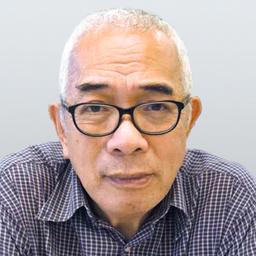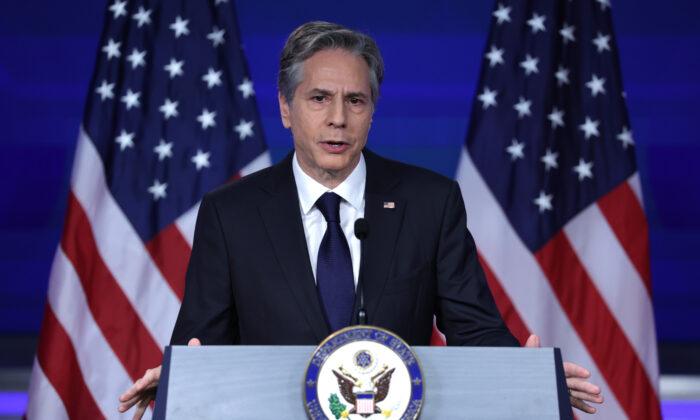The Chinese Communist Party (CCP) is marking its 100th anniversary with extra-tight security. Not only are troops deployed into the capital to beef up security, but also bans were imposed against toy-grade flying objects such as drones and even kites. Its Propaganda Department rolled out programs to indoctrinate people with the so-called “revolutionary spirit of the Party,” such as the “May Fourth spirit” which gave rise to the party, and the “Long March spirit” which epitomized the hardship it had gone through. Such “spirits” were invoked to project a glamorous picture of its own history, yet are full of falsehood.
In the early 1920s, the CCP was already nicknamed the “Ruble Party” because people suspected that it was funded entirely by the now-defunct Soviet Union (USSR). Yet evidence was hard to come by in those early days. In 1991 the Soviet Empire collapsed, leading to the declassification of secret files of both the USSR and the outfit it used to “redden” Asia, the Communist International (Comintern, also known as the Third International). This produced a trove of information about the true face of the CCP.
Scanning through these documents, one can clearly see that the CCP, from its outset, was created by the USSR as a tool to sabotage the Chinese government and divide China. The USSR, through the Comintern, provided funds, weapons, military training, logistic supports, as well as ideological and organizational assistance to the CCP.
One resolution by the CCP literally called the Soviet Union “our motherland” because it was Russia, and not China, that gave birth to the CCP. It also adopted a resolution in its third-party Congress accepting the derogatory status as a local branch of the Comintern. Thus in its early years, the Comintern, through numerous resolutions, told the CCP what to do and how to do it. For example, the Comintern insisted that the CCP send members to join the ruling Kuomintang (KMT, or the Nationalist Party founded by Dr. Sun Yet-sun) and use their KMT status as a legal cover to operate openly, while concealing their real CCP identity. In this way, the CCP succeeded in infiltrating the KMT and planting many informants, who proved instrumental in the CCP seizing power.

Since the CCP was created as an instrument to further Soviet interests in China, it makes sense that it played a traitorous role when Russia invaded China in 1929 over the Chinese Eastern Railway incident. While the whole country under KMT rule tried its best to repel the Russian invasion, the CCP issued directives to its members all over China to “defend the Soviet Union by force.” At that time the CCP did not possess an army. Its way of defending the Soviet Union by force was to stage nationwide riots and create social upheaval in every city where it had a branch. While dealing with the domestic turmoil, the central and northeastern governments’ ability to repel Soviet invasion was seriously undermined. Losing the war, China was forced to sign the Treaty of Khabarovsk, giving up the strategic Heixiazi Island in the Amur River. This was the only cession treaty China concluded with a foreign power since the collapse of the Qing Dynasty in 1911.
Such treason was also obvious in the Mongolian independence movement, a grand plan by the Soviet Union to dismember China. Declassified documents show that while the KMT-run central government had resisted time and again Soviet instigation of separatist movements, the CCP actively supported the Soviets.
During the Yalta Conference in 1945, of which China was not a participant, a secret deal was struck by the United States, Britain, and the USSR to accept the Soviet demand for an independent Mongolia in return for its agreement to take part in the anti-Japanese war. The KMT was totally in the dark but was forced by the United States to accept the Yalta deal. While the whole country was angered by the secret deal, declassified documents show that there were several telegram exchanges between Soviet leader Joseph Stalin and CCP leader Mao Zedong showing that the latter extended his whole-hearted support to the Soviet-orchestrated dismemberment of China while the former told Mao what to do in garnering domestic support for the independence of Mongolia.
Apart from Mongolia, the Soviet Union also tried to further dismember China by supporting the independence movement of Xinjiang, sending troops there to fight alongside the separatist forces against the local government loyal to the KMT central government. In support of this treacherous move, the CCP set up an office in Urumchi (present-day Wulumuqi, the capital city of Xinjiang) to facilitate contact with the movement and offered assistance to them. Mao hailed the movement there as part of the Great Revolutionary Movement of China.
From 1927 onward, with Russian support, the CCP managed to build up an armed force capable of conducting guerilla warfare as well as a military uprising, thus creating “revolutionary bases” all over the country. By 1931 such bases were strong enough that they were able to join forces to create a “Soviet Republic of China” with Mao as the head. He then proclaimed proudly that “henceforth there are two nations in China, a Republic of China and a Soviet Republic of China.” This marked the formal division of the country.
These outline some of the evidence from declassified documents exposing the loathsome nature of the CCP. Due to its infamous background, the CCP was adamant at whitewashing this chapter in its official narration. On Sept. 3, 2020, party boss Xi Jinping said empathetically that “the Chinese people would never be allowed any attempt to discredit the party by distorting its history.” This indicates that the CCP is fully aware of its scandalous past but wants to hide it from the public eye.





